Make sure to join my list for Weekly Tips and Recipes to Your Inbox
15 Expert Raised Bed Cut Flower Garden Layout Ideas
I’ve been dreaming of adding a cut flower garden to my backyard, something beautiful, functional, and easy to manage. But there’s one issue: I’m not in a permanent spot right now.
I want to grow a variety of blooms, dahlias, zinnias, snapdragons, and maybe even get a little whimsical with some cosmos and marigolds. The challenge? Building a layout that lets me grow everything now, but also move it later when I settle somewhere more permanent.
That’s when the idea of a raised bed cut flower garden layout on caster wheels started growing roots in my mind.
At first, it seemed brilliant. Portable raised beds are easy to assemble, great for managing pests, and perfect for planning out dense flower groupings.
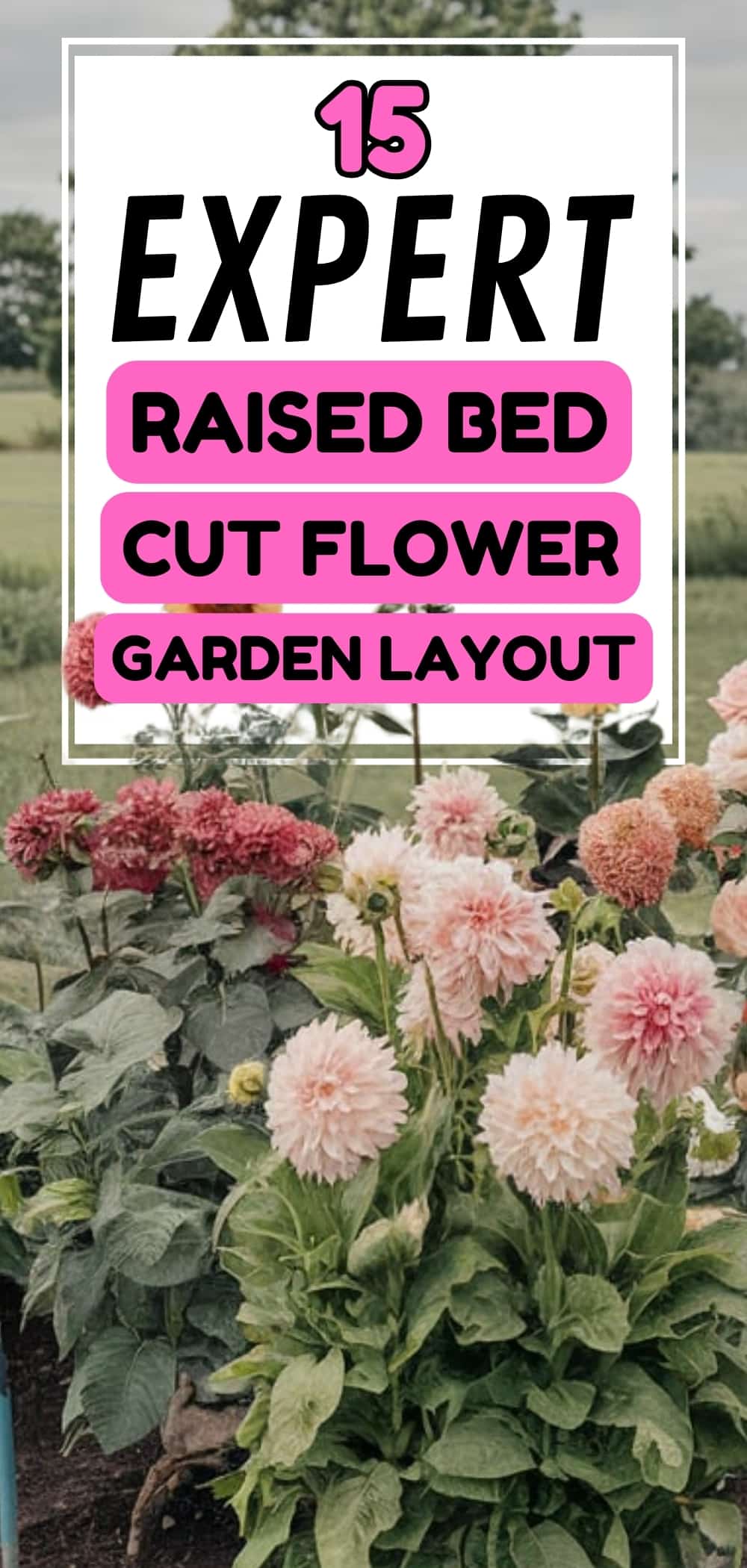
But then the questions started rolling in: How deep should they be? What about weight distribution? Will they sink into the grass? Others shared stories, and some had success with wheeled beds on concrete.
But many warned of sinking wheels, soil heaviness, and the surprise weight of water-logged wood. One gardener recommended using large grow bags in carts, another swore by Gorilla carts with solid wheels for durability.
These were the kind of insights I needed, especially with my goal to make this cut flower garden section not just beautiful, but practical too.
In the end, I decided to use a mix of raised beds and grow bags placed inside a sturdy cart. This gives me the mobility I need, especially since I’ll only be moving them once.
I’ll arrange my cut flower garden using a square foot layout, tall dahlias at the back (north side), mid-height snapdragons in the middle, and cheerful zinnias and marigolds up front.
The raised beds warm up quicker in spring, give me control over the soil, and make harvesting a breeze. Once I’m ready to move, my garden comes with me, blooms and all.
I collected 15 expert raised bed cut flower garden layouts, each with detailed strategies for spacing, succession planting, seasonal bloom rotation, and maximizing yield in both beauty and stems.
Creating a raised bed cut flower garden is a brilliant way to ensure healthy blooms, efficient maintenance, and abundant harvests.
15. Classic Rectangular Grid for Continuous Blooms
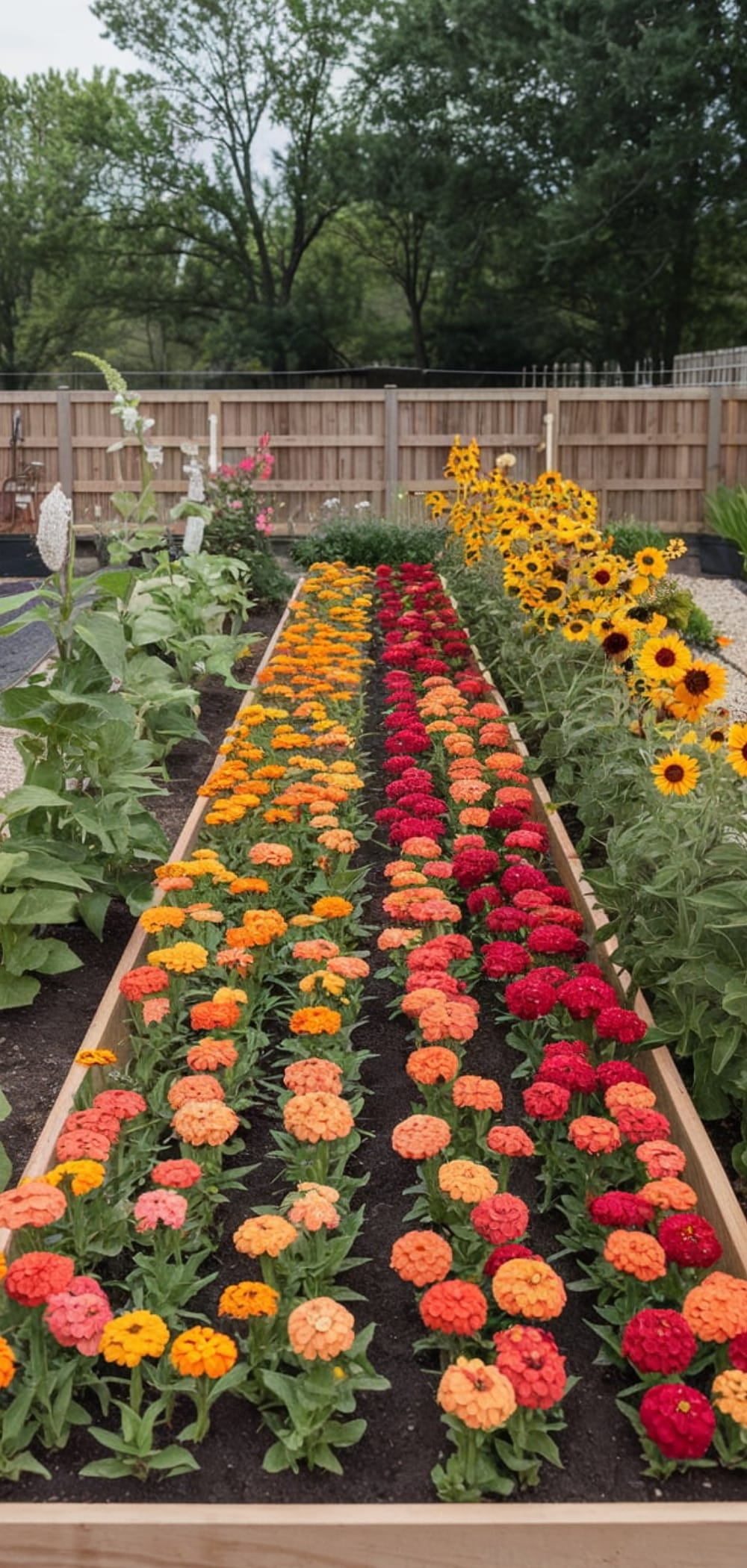
A traditional layout with parallel rows of evenly spaced flowers is ideal for beginners.
Tips:
- Use 4’x8′ raised beds.
- Divide into four 2’x4′ sections for easier crop rotation.
- Plant tall varieties like snapdragons and sunflowers in the center rows with shorter blooms like zinnias or calendulas on the outer rows for sunlight access.
14. Zoned Layout for Color Blocking
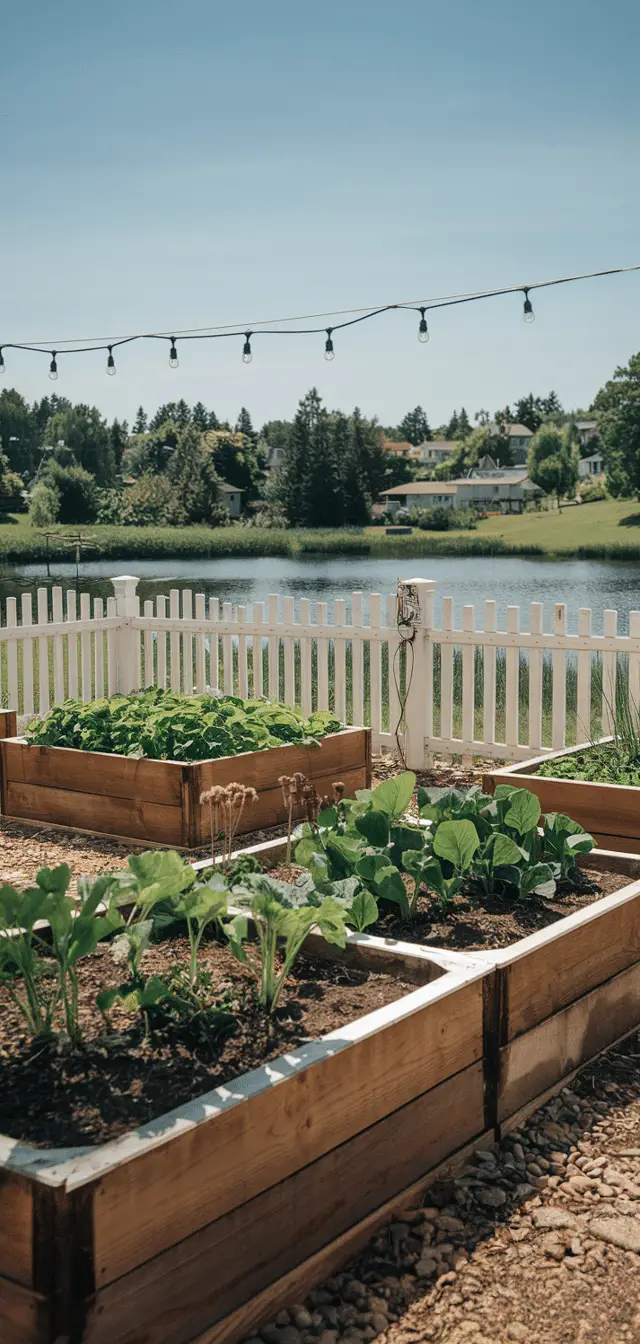
Create sections by color, warm tones in one area, cool in another, to enhance aesthetic appeal and ease harvesting.
Tips:
- Use drip irrigation to maintain consistent moisture without color bleeding.
- Rotate by zone each season to manage soil health.
13. Spiral Path Raised Bed Cut Flower Garden
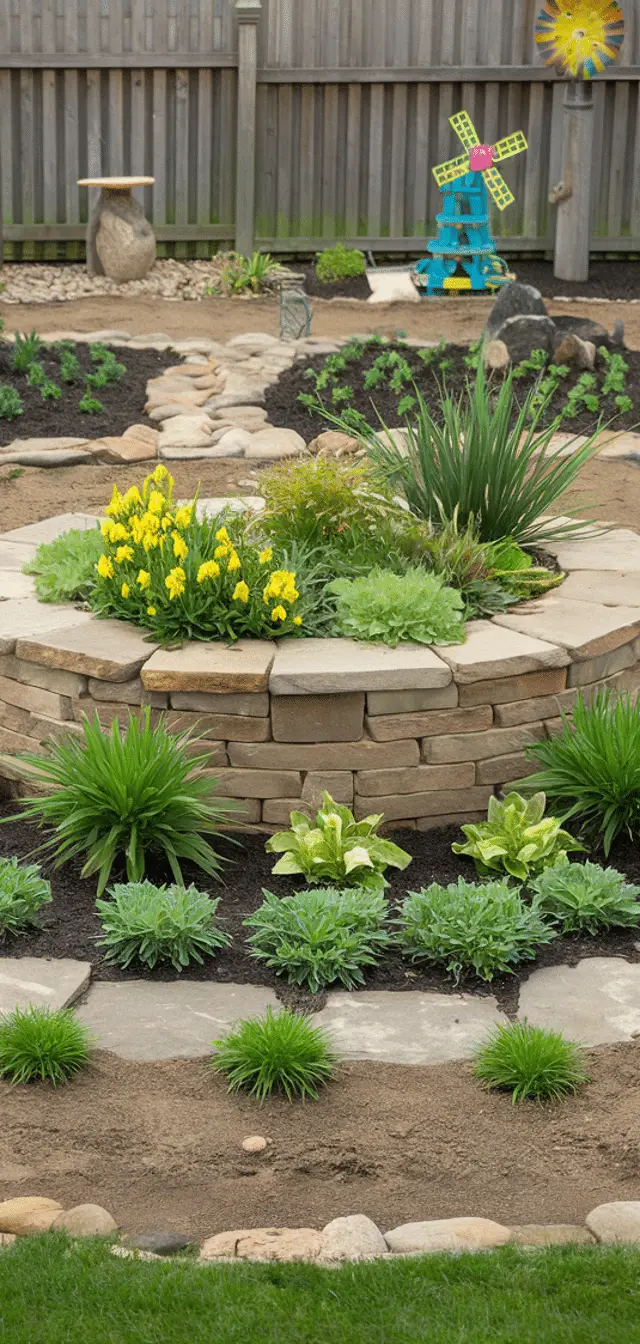
Design a spiral-shaped path winding through flower beds for a stunning and functional layout.
Tips:
- The center can host a focal flower (like dahlias).
- Outer spirals should have fast bloomers like cosmos or bachelor buttons.
- Integrate stepping stones for easy access.
12. Companion Planting Matrix

Interplant beneficial companions to attract pollinators and deter pests.
Tips:
- Pair marigolds with cosmos to repel nematodes.
- Include yarrow with nearly all cut flowers to increase beneficial insect presence.
- Avoid mixing plants with drastically different water requirements.
11. Vertical Tiered Raised Bed for Compact Spaces
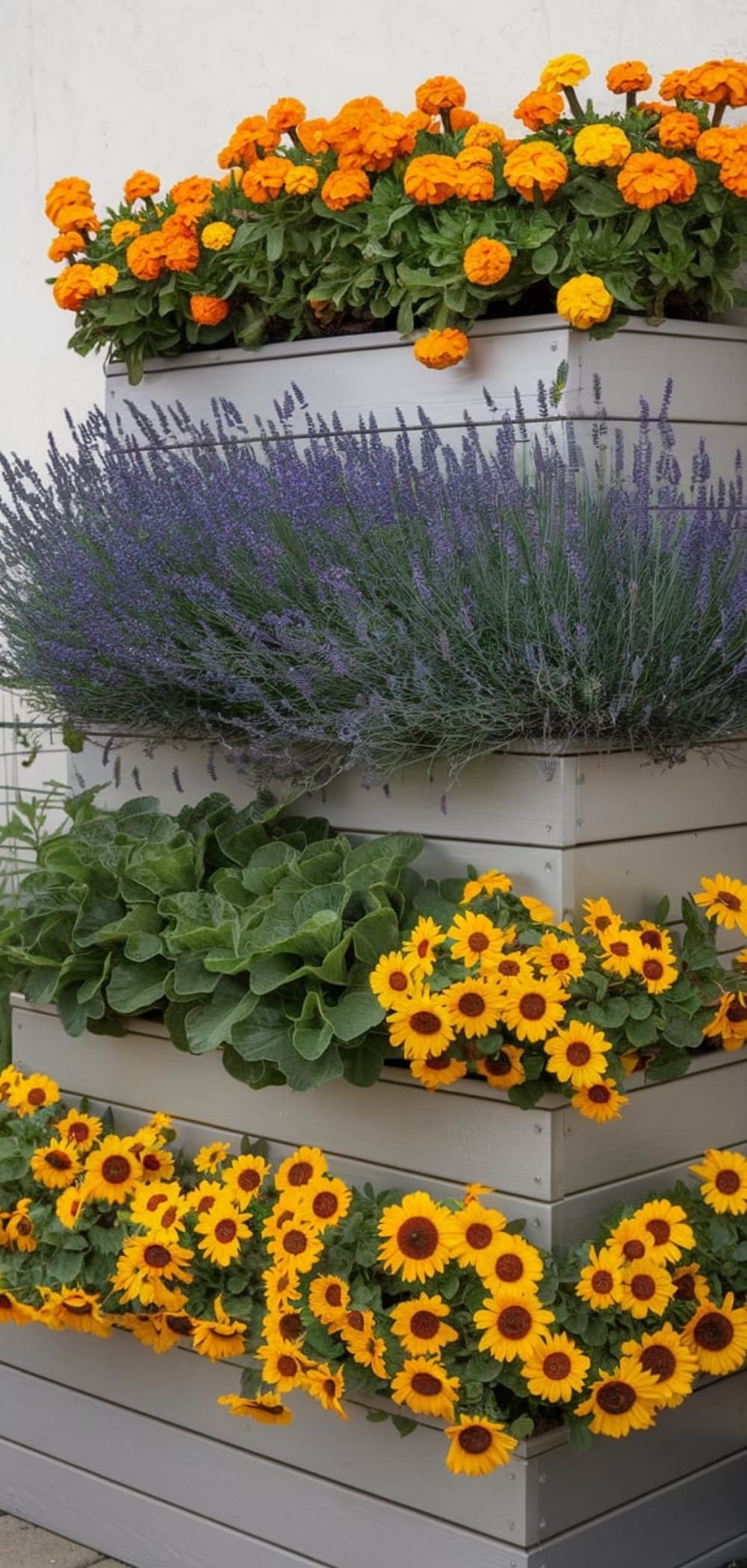
Build a tiered wooden structure where each level supports different flower varieties.
Tips:
- Use the base for taller-stemmed flowers like foxgloves.
- Mid-tiers for medium-height fillers like ammi.
- Top tier for trailing varieties or shorter stems like scabiosa.
10. U-Shaped Raised Bed for Easy Access

Arrange three raised beds in a U-shape around a central working area.
Tips:
- Fill each bed with a different bloom schedule, spring, summer, and fall varieties.
- Use central access for tool storage or a small compost area.
9. Succession Planting Grid Layout
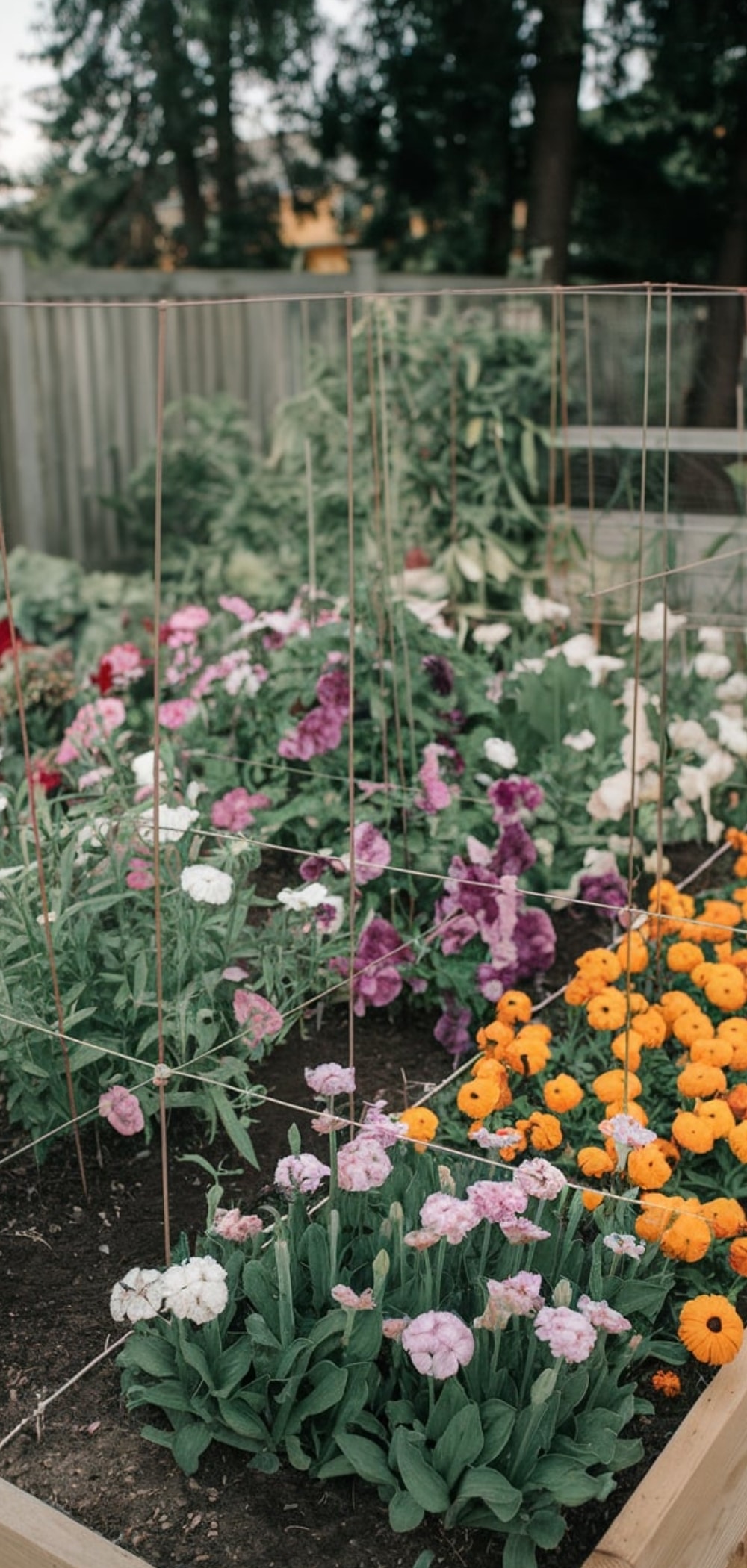
Divide the bed into sequential planting sections to ensure a steady supply of cut flowers all season.
Tips:
- Mark each grid with planting dates.
- Include fast-to-harvest varieties like sunflowers every 2 weeks.
- Integrate composted manure to replenish nutrients between successions.
8. Raised Bed Pollinator Strip
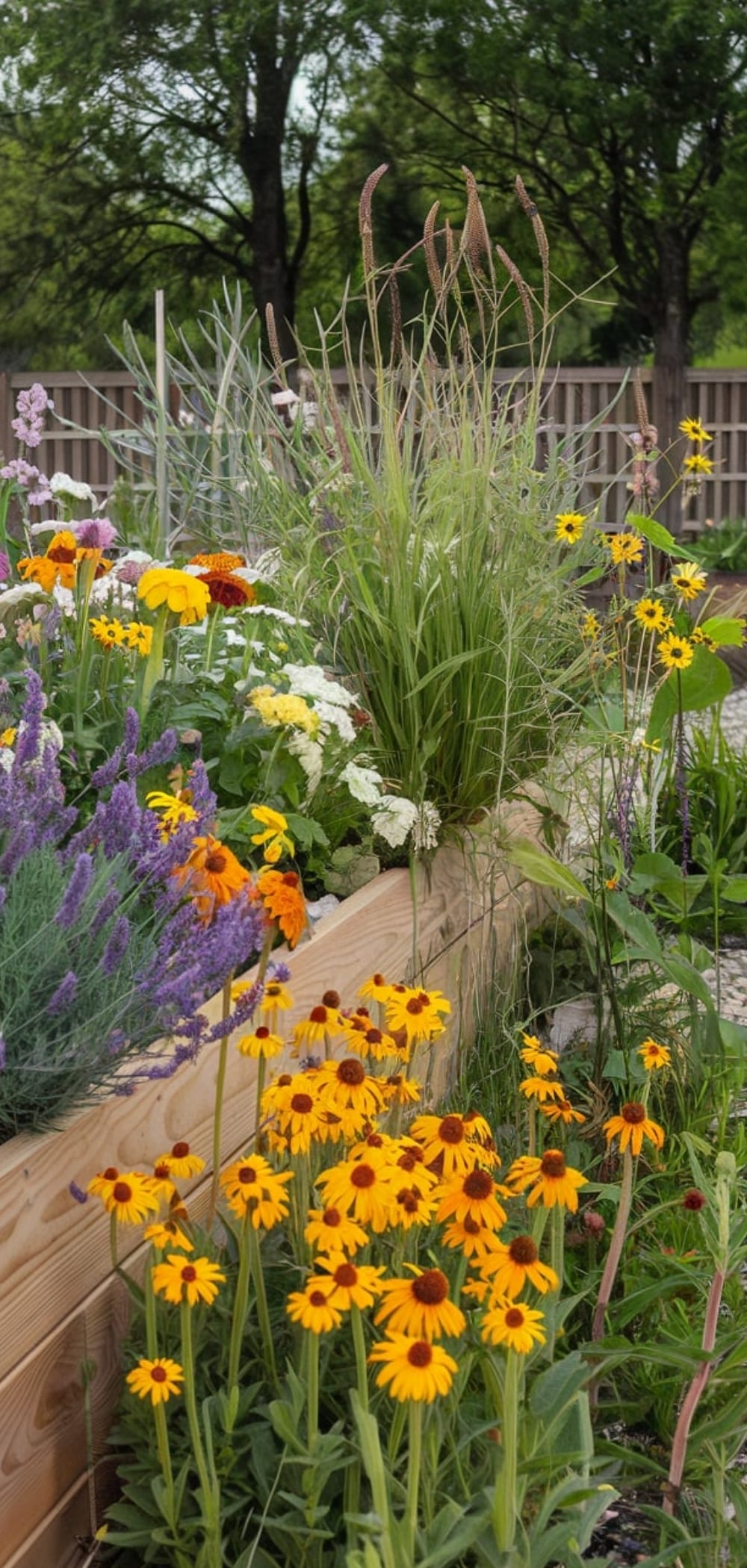
Dedicate a full raised bed to pollinator-attracting species, placed near or between cut flower beds.
Tips:
- Include bee balm, borage, and lavender.
- Keep it separate to avoid cross-pollination that may affect seed-saving plans.
7. Mixed Height Triangular Layout
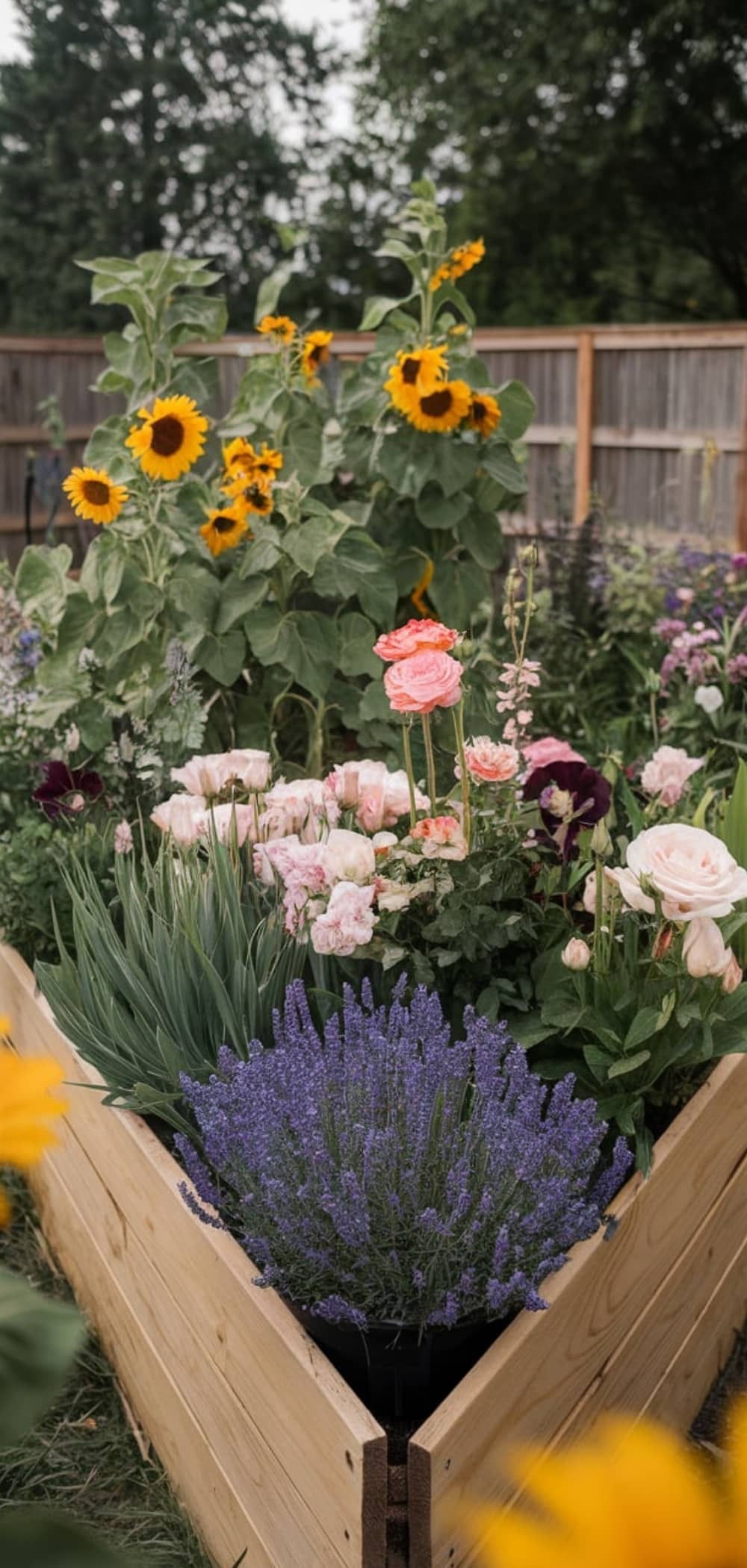
Use a triangular design to accommodate flowers of varying heights, increasing airflow and visibility.
Tips:
- Place the tallest species at the point farthest from the sun’s path.
- Slope heights gradually decrease toward the shortest on the sunniest edge.
6. Fragrance-Focused Raised Bed Design
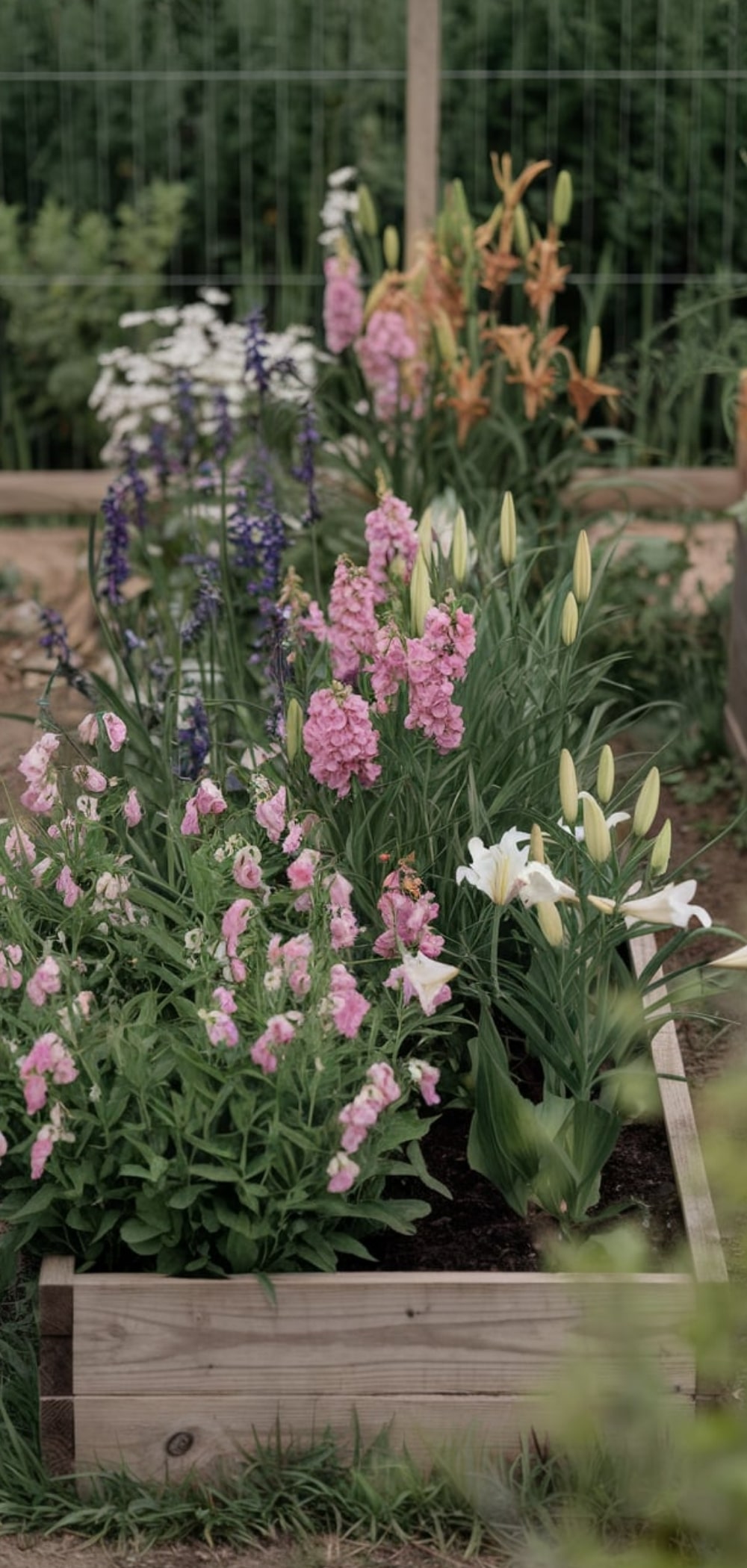
Cluster fragrant flowers like sweet peas, stock, and lilies in a designated bed.
Tips:
- Place this near patios or pathways for maximum enjoyment.
- Use organic mulch to hold fragrance oils and moisture in the soil.
5. Seasonal Rotation Layout
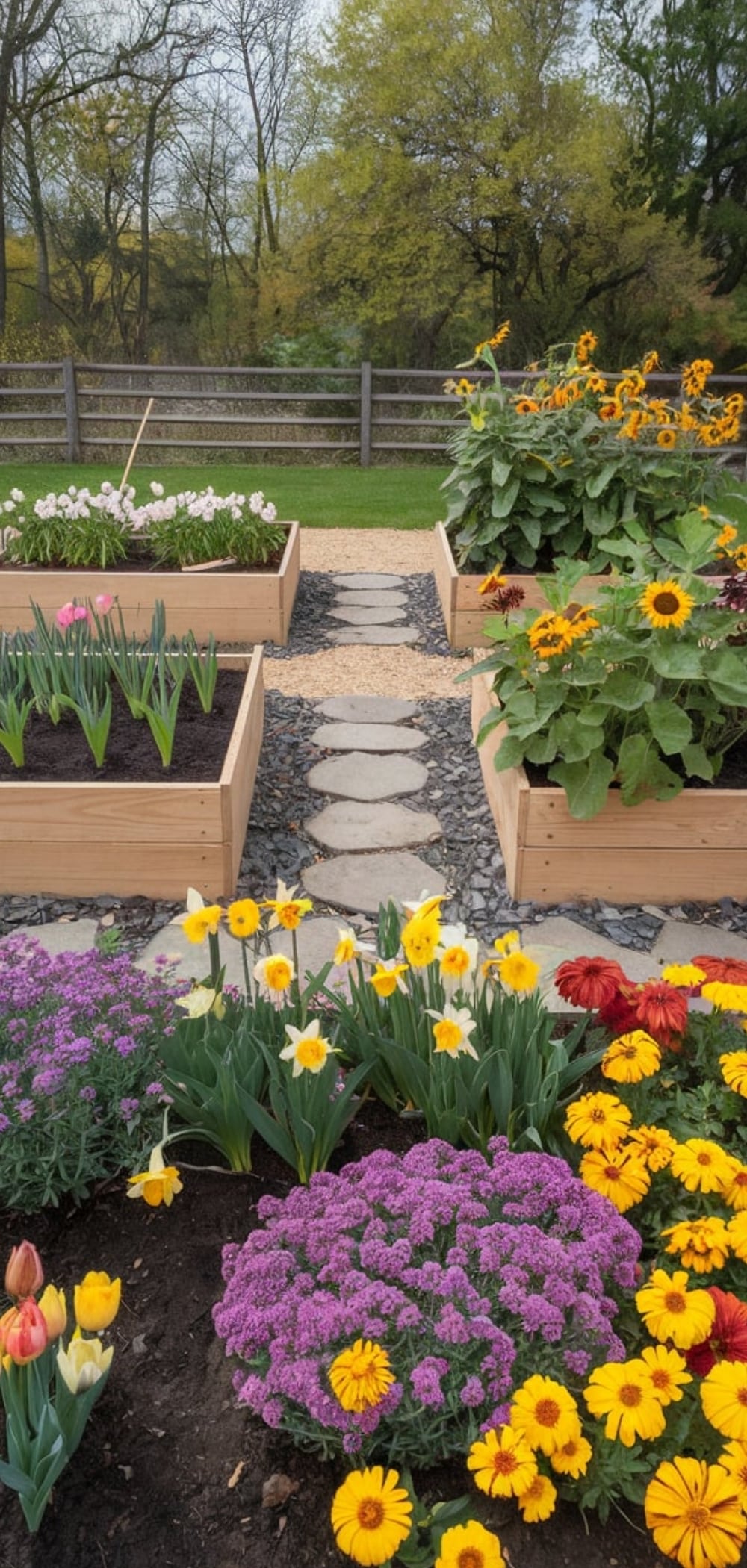
Create distinct beds for spring, summer, and fall bloomers with integrated soil rest periods.
Tips:
- Plant spring bulbs like tulips early, followed by fast-growing cosmos or zinnias.
- Rotate with cover crops like clover or rye between seasons.
4. Cut-Flower Production Layout with Rows and Pathways
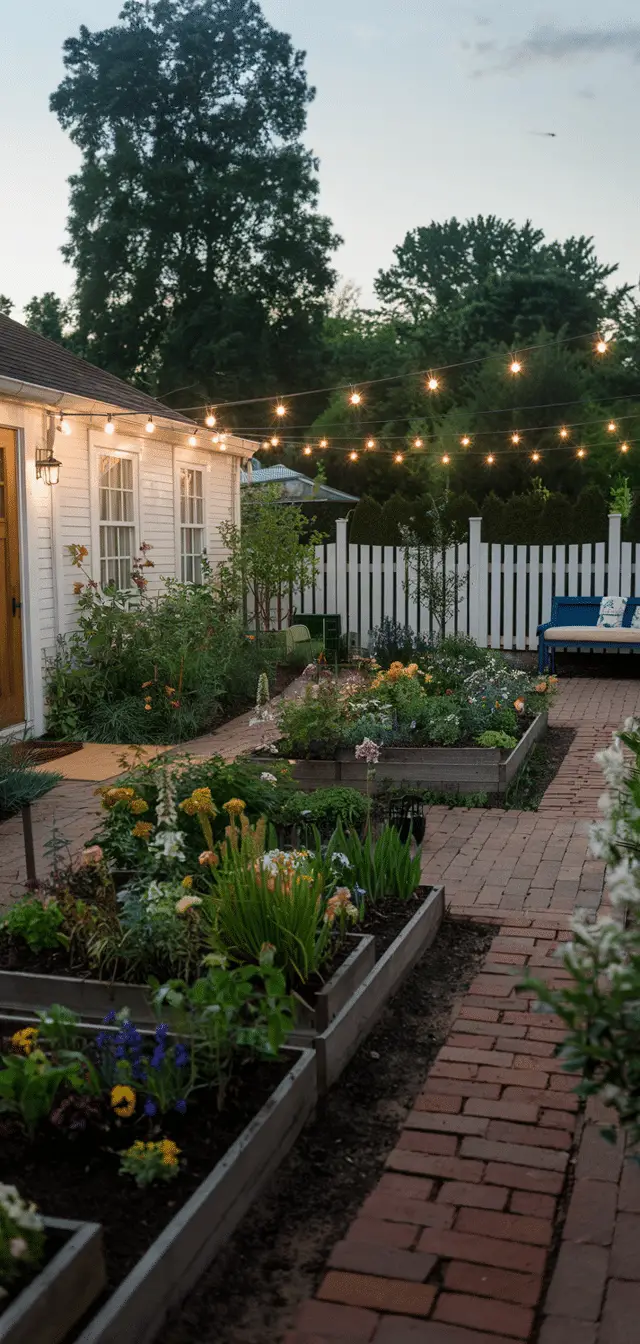
Designed specifically for harvesting efficiency, this cut flower garden layout features long, narrow beds with walking paths.
Tips:
- Use 30-inch-wide beds with 18-inch walking paths.
- Plant in offset double rows for dense yield.
- Ideal for market growers or teen entrepreneurs.
3. Color Wheel Layout
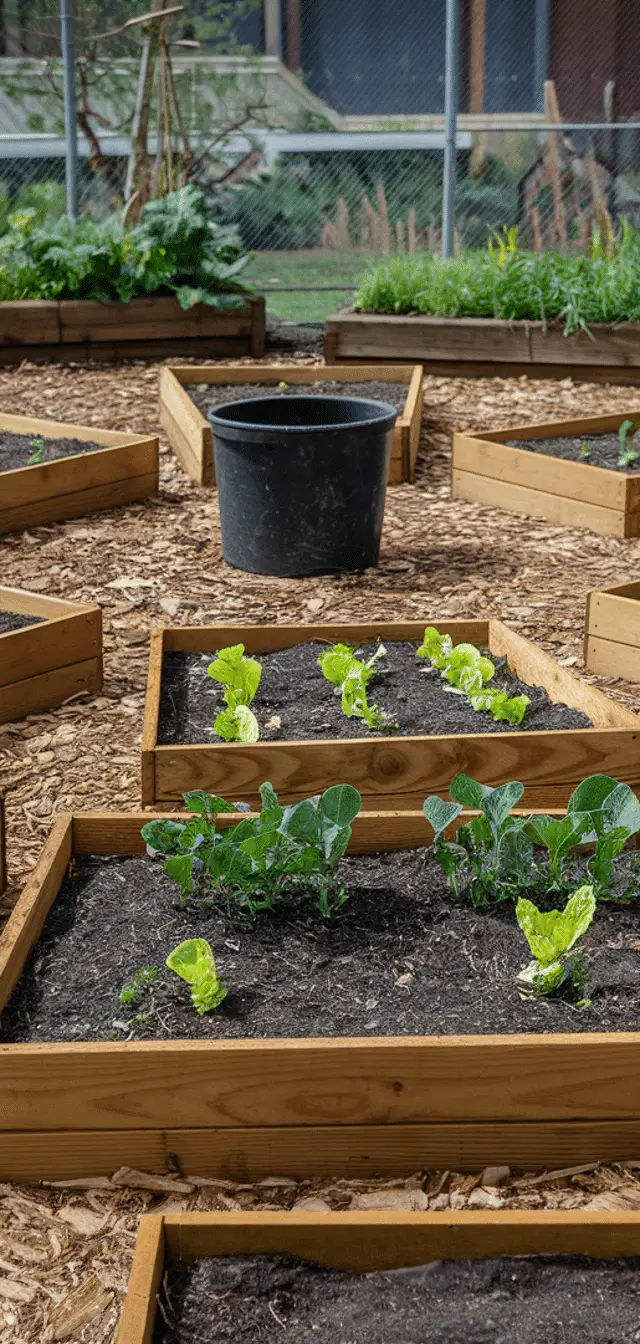
Design your beds in a circular layout with each segment dedicated to one section of the color spectrum.
Tips:
- Use a centerpiece like ornamental alliums.
- Rotate planting directions annually to vary visuals and prevent depletion.
2. Edging-Friendly Layout with Border Fillers
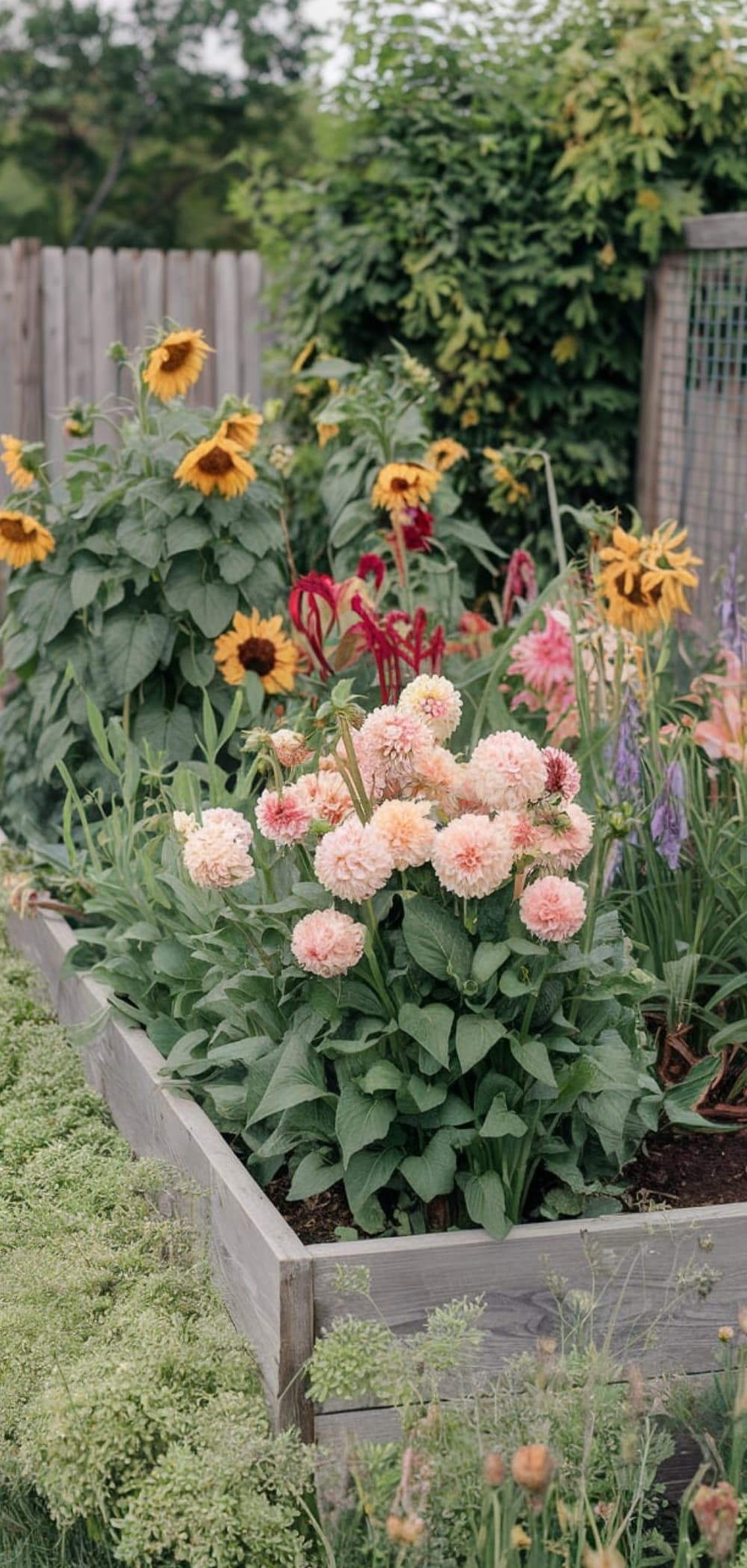
Plant low-growing filler flowers like dusty miller and statice around the outer edges of the raised bed cut flower garden.
Tips:
- Helps retain soil and define bed boundaries.
- Add visual contrast and textural filler for bouquets.
1. Raised Bed with Built-in Trellising for Climbers
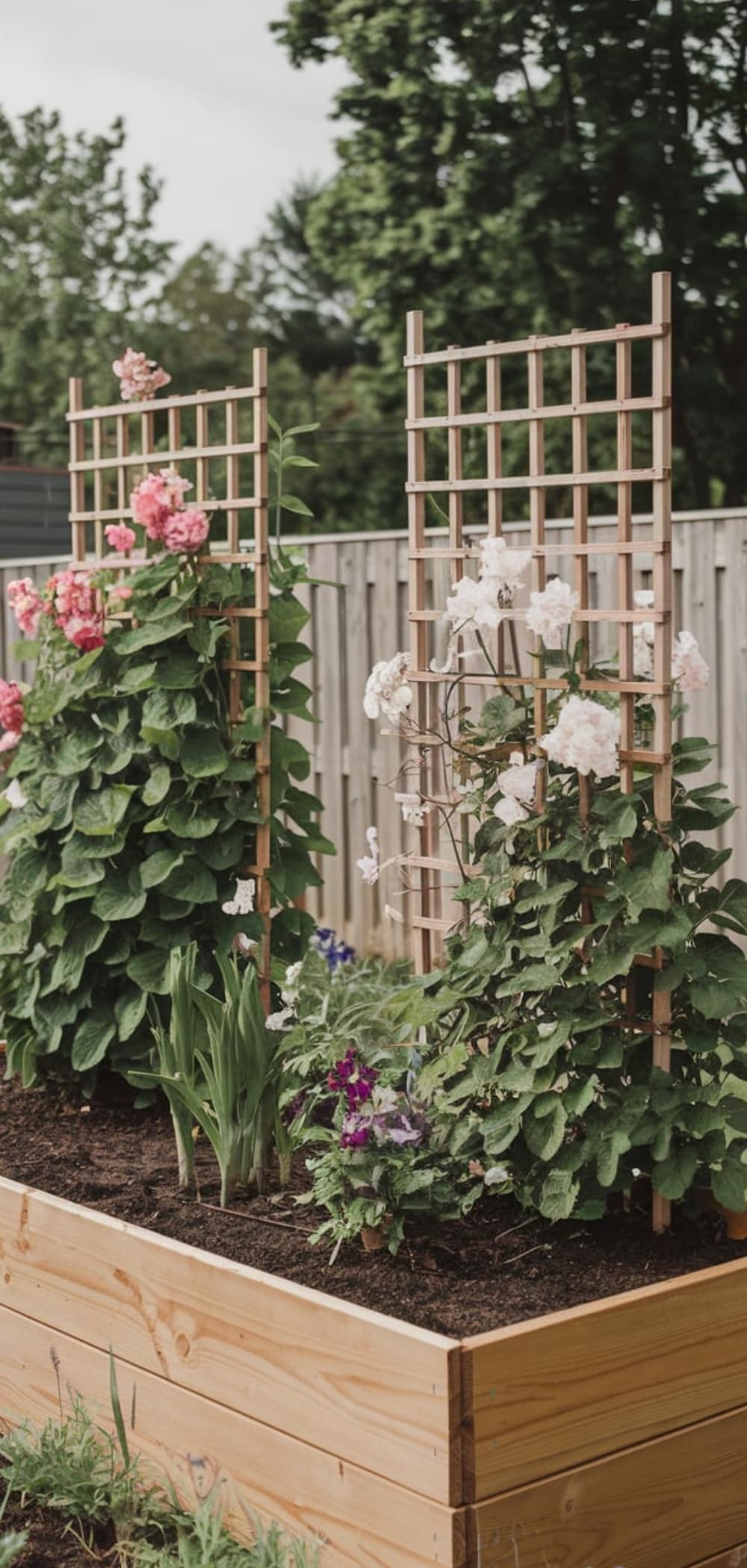
Incorporate trellises directly into the raised bed cut flower garden for climbers like sweet peas and clematis.
Tips:
- Use sturdy cattle panels or bamboo stakes.
- Train vines early to prevent overcrowding or shading out nearby blooms.
Conclusion
A well-planned raised bed cut flower garden is not only beautiful but also productive and sustainable. These 15 layout ideas empower us to maximize space, optimize bloom time, and create a vibrant floral oasis right in our own backyards.
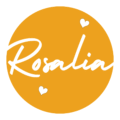




[…] were in place, I really started having fun with planting. I tucked tomatoes, herbs, and peas into my raised beds and added bright marigolds for pest […]
[…] I started planning my raised bed garden, I had one big goal: growing more vegetables in a limited space. Sounds simple, right? But if […]